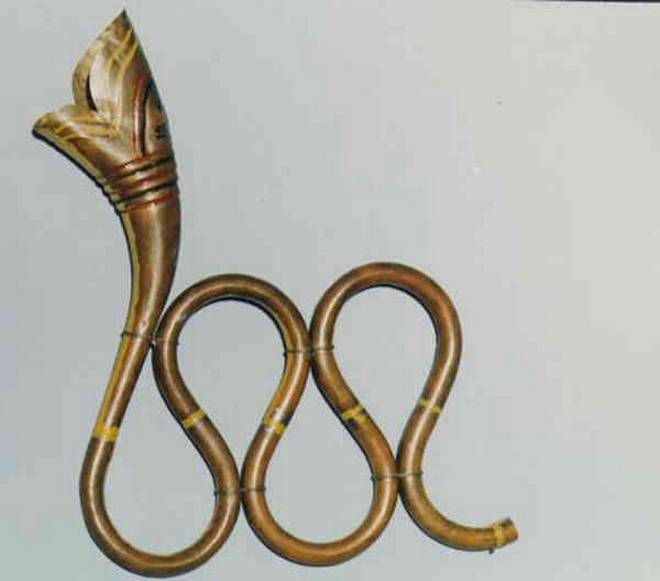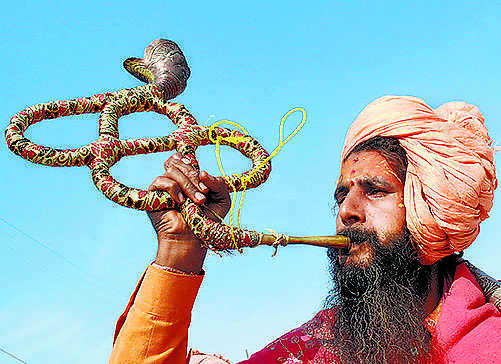Nagphani
This is a collection of articles archived for the excellence of their content. |
A traditional musical instrument
Dr. M. Lalitha and M. Nandini, August 30, 2018: The Hindu

From: Dr. M. Lalitha and M. Nandini, August 30, 2018: The Hindu

From: DR. M. LALITHA AND , M. NANDINI, August 31, 2018: The Hindu
Nagphani is a traditional instrument of Uttarakhand, Rajasthan and Gujarat. It is played during festivals
This time we went to Rishikesh for a concert and on our way back decided to spend some time in Dehradun. Once there, we visited the Mindrolling Monastery, situated in the foothills of the Himalayas. We also visited Sahasradhara, popular for its sulphur springs, and the Robbers Cave, a river-cave formation in the Himalayas.
On the banks of the Asan river in Dehradun is the Tapkeshwar Mahadev Temple and the Drona Guha (Dronacharya’s cave). Our next stopover was the Timber Museum, which was supposed to be the hideout of Sultana Daku and his gang of bandits, who once terrorised Central India.
As we enjoyed the significance of each place, we also got to witness a few music performances of different instruments special to the region. One particular instrument drew our attention. Its sound and shape resembled that of a snake. We were told that the instrument, made of brass, is called Nagphani.
It belongs to the category of aerophones or wind instruments, which are further classified as woodwind and brass. Nagphani belongs to the family of brass instruments. It can be made in copper and bronze too. It is around 1.5m in length with four bends. Sometimes these bends are joined by wires.
It is a traditional instrument belonging to the Kumaon region in Uttarakhand and draws attention due to its unique shape. The instrument is also played in Rajasthan and Gujarat. Uttarakhand is a treasure trove of folk songs, folk dances and traditional musical instruments.
With a hood-shaped edge, the mouth of the instrument is round and open. It is narrow near the mouth and broad at the end, resembling the snake. It is held either on the right or the left hand by the performer. Sometimes the instrument is painted with bright colours. It is also referred to as Nagpani/Nagfani or serpentine horn. The literal translation of Nagfani being snake hood.
Divine association
Nagphani is associated with Lord Siva. It is played during religious and social ceremonies. Those who practice tantrik rituals use this instrument.
A folk instrument, it is an integral part of Garhwal folk theatre and Chholiya dance, the sword dance, performed at Rajput weddings.
Nagphani is also associated with sadhus, who are often seen playing it during the Kumbh mela. Besides musical performances, the instrument is also associated with wars. It is learnt that Nagphani was played during battles to boost the morale of the troops. But now, it is being used to welcome visitors. The use of this ancient instrument during festivals is becoming a rarity. Efforts must be taken to save it for posterity.
The writers are classical violinists and researchers